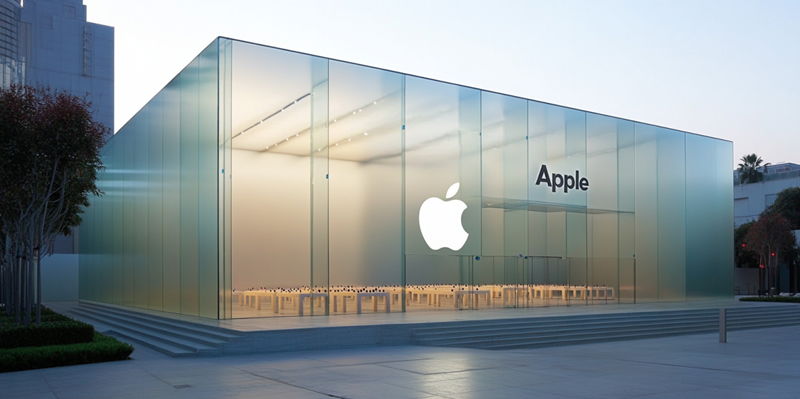Apple has unveiled its latest MacBook Pro models, boasting 14 and 16-inch screens and powered by the advanced M4 chips, a mere few months after the release of the M3 processors. These new laptops represent Apple’s aggressive push to stay ahead in the competitive tech landscape, making them the first of the company’s laptops to feature the M4 chips. One of the standout upgrades is the inclusion of 16GB of RAM as a standard feature, doubling the memory capacity from previous generations. This change is a nod to the increasingly demanding requirements of generative AI applications that Apple is keen on embedding into its devices, promising to deliver better performance for power users.
The introduction of the M4 chips brings several configuration options, starting with the base model M4 that offers 10 CPU cores and 10 GPU cores. Apple claims these models can deliver up to 10.9 times faster 3D rendering and 9.8 times faster video editing compared to the last generation 13-inch M3 MacBook Pro. However, one notable caveat is that the base M4 model does not support Thunderbolt 5. Higher-tier models do feature Thunderbolt 5 in their USB-C ports, doubling the data transmission speeds to an impressive 120Gbps. The new port configuration also includes an HDMI port that supports 8K resolution, an SD card slot, MagSafe 3 for charging, and a headphone jack. Wireless connectivity remains at Wi-Fi 6e and Bluetooth 5.3, leaving out the latest Wi-Fi 7 standard.
Unmatched Performance and Configurability
For users who demand even more power, Apple offers the M4 Pro variant, which takes performance up a notch with 14 CPU cores and 20 GPU cores. According to Apple, this model is twice as powerful as the base M4 and three times faster than the M1 Pro chip. The 14-inch version of this model starts at $1,999, while the 16-inch version starts at $2,499, each equipped with 24GB of RAM. The significant jump in core count and RAM makes it an attractive option for professionals who need the extra horsepower for tasks like video editing, 3D rendering, and software development.
At the top of the line is the M4 Max, designed for users who seek the highest level of performance. This variant features 16 CPU cores and 40 GPU cores, reportedly making it 3.5 times faster than the M1 Max. The 14-inch M4 Max starts at $3,199, and the 16-inch version at $3,499. Such robust specs make these laptops ideal for users involved in resource-intensive activities, offering superior performance levels that far outstrip their predecessors. Furthermore, the 14 and 16-inch models come with enhanced Liquid Retina XDR displays, featuring an optional nano-texture coating to reduce glare and achieve peak brightness of 1,000 nits.
Advanced Features and Availability
Besides the processing power and memory upgrades, the new MacBook Pros come with a slew of additional features to enhance the user experience. One noteworthy addition is the new 12MP Center Stage camera, designed to follow user movements and ensure they stay in frame during video calls, enhancing the quality of remote work interactions. The studio-quality audio setup is achieved through a six-microphone array, promising clear and immersive sound for both video calls and media consumption. These features, combined with the upgraded hardware, make the new MacBook Pros a compelling choice for power users who require top-notch performance and usability.
Apple has opened pre-orders for these updated laptops in 28 countries, including the United States, with shipping set to begin on November 8. This timely rollout ensures that eager power users can get their hands on these high-performance machines without a long wait. In essence, the new MacBook Pros offer a blend of cutting-edge technology and user-centric features aimed at delivering an extraordinary computing experience. With their significant advancements in processing power, memory capacity, and overall functionality, Apple’s latest offerings seem well-positioned to set new benchmarks in the realm of high-performance laptops.
Conclusion
Apple has just rolled out its newest MacBook Pro models, featuring both 14 and 16-inch screens and powered by the cutting-edge M4 chips, just months after debuting the M3 processors. These laptops mark Apple’s ambitious move to outpace competitors, being the first in their lineup equipped with the M4 processors. A key upgrade is the inclusion of 16GB of RAM as standard, doubling the memory from previous models. This change caters to the growing demands of generative AI applications that Apple aims to integrate into its devices, enhancing performance for advanced users.
The M4 chips come with various configurations, starting with a base model offering 10 CPU cores and 10 GPU cores. Apple asserts these models can achieve up to 10.9 times faster 3D rendering and 9.8 times quicker video editing compared to the previous 13-inch M3 MacBook Pro. However, the base M4 model lacks Thunderbolt 5 support; higher-tier models include Thunderbolt 5 in their USB-C ports, doubling data speeds to 120Gbps. The new port setup also includes an HDMI port supporting 8K resolution, an SD card slot, MagSafe 3 for charging, and a headphone jack. Wireless connectivity uses Wi-Fi 6e and Bluetooth 5.3, without the new Wi-Fi 7.

